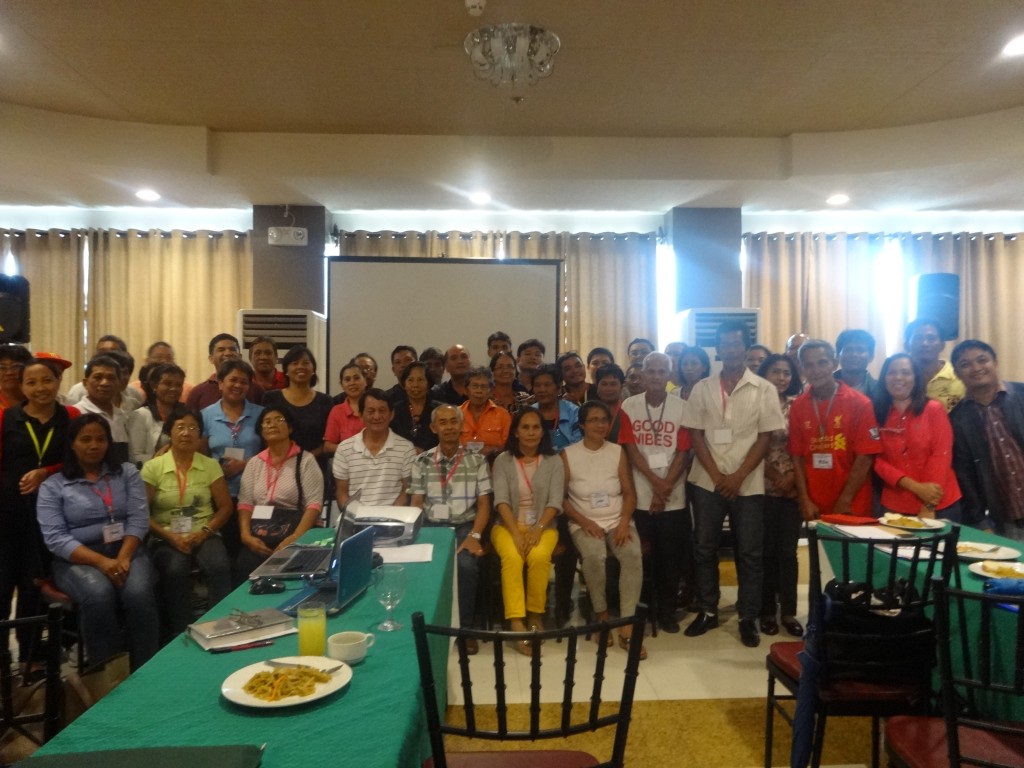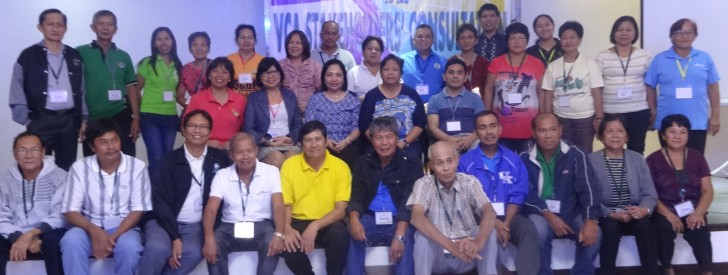 The RPCO V I-PLAN team headed by Aloha Gigi I. Bañaria (4th from left, second row) together with the participants of the VCA for Pineapple Stakeholders’ consultation in Camarines Norte on July 6, 2015.
The RPCO V I-PLAN team headed by Aloha Gigi I. Bañaria (4th from left, second row) together with the participants of the VCA for Pineapple Stakeholders’ consultation in Camarines Norte on July 6, 2015. PRDP explores potential of Bicol’s second priority commodities through VCA
July 13, 2015
With its rich natural resources, Bicol is known as an agricultural, tourism and maritime zone. According to the Philippine Statistics Authority, Bicol has 892,000 hectares of farm area which is 9.2 percent of the country’s total farm area, the largest among all regions nationwide. Meanwhile, records from the Bureau of Fisheries and Aquatic Resources (BFAR) show that the region has a 3,116.1-kilometer coastal area.
To explore existing and potential opportunities of the region’s second priority commodities namely pineapple, cassava, pili candies, seaweeds, and sweet potato, the Philippine Rural Development Project (PRDP) Regional Project Coordination V’s (RPCO V) Investments in Agriculture and Fisheries Modernization Plan (AFMP) Planning at the Local and National Levels (I-PLAN) conducted a series of value chain analysis (VCA) stakeholders’ consultation in Camarines Norte, Camarines Sur, Sorsogon, Albay, and Naga City on July 6-10, 2015.
The VCA stakeholders’ consultation aimed to solicit the views of people who may affect or be affected directly or indirectly, positively or negatively by the project implementation. High Value Crops Development (HVCD) Program Coordinator Rosita M. Imperial provided the situationers for pineapple in Camarines Norte, pili in Naga City, and sweet potato in Albay. Meanwhile, Cassava Program Coordinator Engr. Danilo Aman discussed the current situation of the cassava industry in Camarines Sur. Likewise, Assistant Seaweeds Coordinator of the Bureau of Fisheries and Aquatic Resources (BFAR) Region V Lydia Noblefranca provided inputs about the seaweed industry in Sorsogon. Regional Agricultural and Fishery Council (RAFC) V Chairman Jose A. Cordero also attended the series of VCA stakeholders’ consultation.
Farmers, traders, processors and representatives from government agencies including the City/Provincial Project Management and Implementation Unit (C/PPMIU), Office of the Provincial Agriculturist (OPAG), Department of Science and Technology (DOST) and Department of Trade and Industry (DTI) were asked to share their aspirations for their respective industries by 2019, validate and rank key constraints, and assess relationships and inter-firm cooperation.
According to Project Support Office South Luzon Planning Specialist Rey B. Lara, through the VCA, political maneuvering of project implementation is avoided.
“Tinitingnan ng VCA ang gap for sub-project interventions. Based on the Expanded Vulnerability and Suitability Assessment (E-VSA) ang mga municipalities na bibigyan ng PRDP investments,” he said.
He underscored that the farmer is the major player in the value chain and PRDP’s goal is to develop inclusive and efficient industries with functional VCAs wherein farmers are integrated.
“Win-win situation through PRDP support. Doon tayo patutungo hindi yung nasa losing end lagi ang mga farmers,” he stated.
In addition, he encouraged the participants to organize themselves into an association for them to qualify in accessing PRDP investments and to have bargaining power. Also, he urged the Provincial Development Councils to provide enabling support in the interest of farmers’ service and other government agencies to heighten awareness on the relevant programs they offer that would boost Bicol’s industries.
Naga City CPMIU Head Wilfredo Prilles said that the VCA stakeholders’ consultation has been very beneficial in generating the information that they need in order to establish Naga City’s role as the pili processing center in Bicol. He added that PRDP brings the City closer to its vision of becoming a world-class pili exporter.
Alene M. Gregorio, PPMIU-Camarines Sur I-PLAN Head, stated that the activity is an initial step to come up with the Provincial Commodity Investment Plan (PCIP) in which VCA is the framework.
“We are happy because it turned out that all players and segments were represented,” she added.
RPCO V I-PLAN Component Head Aloha Gigi I. Bañaria said that PRDP South Luzon is capacitating the technical staff of the province and the RPCO to prepare the VCA rather than relying on consultancy services.
“Kung tayo–local government unit, RPCO and private sector ay magtutulungan, mas giginhawa ang buhay ng mga farmers at fisherfolk sa Bicol,” she said.
In 2011, Bicol ranked third among pineapple producing regions nationwide with 116,123 metric tons. Meanwhile, in 2010, the region ranked fourth in terms of volume of production for cassava with 35, 453 metric tons. In 2012, the region had the biggest share of pili production in the country with 85 percent share to the total production of 7,933 metric tons. In 2013, Bicol ranked second among sweet potato producing regions in the country with a total volume of production of 94,881 metric tons. Moreover, the region’s coastal waters were identified as potential seaweed farming sites while commercialization of seaweed products were being undertaken by the Regional Fisheries Research and Development Center (RFRDC) Region V since 2009.
VCA is a science-based tool adopted by PRDP to identify market opportunities that can promote growth, determine constraints to the industry’s progress, describe interfirm relations’ nature and justify basis of project interventions. It also intends to develop collaboration and generate stakeholders’ commitment to the project implementation.
Four VCAs of the first priority commodities from Bicol have already received No Objection Letter 1 from the National Project Coordination Office namely coconut for Albay and Camarines Norte’s coco geonets and coco sap sugar for Camarines Sur and abaca (fiber) for Catanduanes. On the other hand, completion of requirements at the PSO level and drafting of VCA map are on-going for Sorsogon’s VCA for pili (pili oil) and Masbate’s goat (meat and live goat), respectively. Furthermore, the RPCO V I-PLAN team conducted a VCA for mud crab stakeholders’ consultation in Catanduanes on June 16, 2015.
PRDP is a 27.5 billion-worth project designed to establish an inclusive, market-oriented, and climate-resilient agri-fishery sector. It is funded by a World Bank loan of P20.50 billion, Global Environment Facility grant worth P287 million, budget from the National Government amounting to P3.579 billion and Local Government Units equity of P3.118 billion. (Annielyn L. Baleza, I-SUPPORT InfoACE Unit, DA-RAFIS 5)
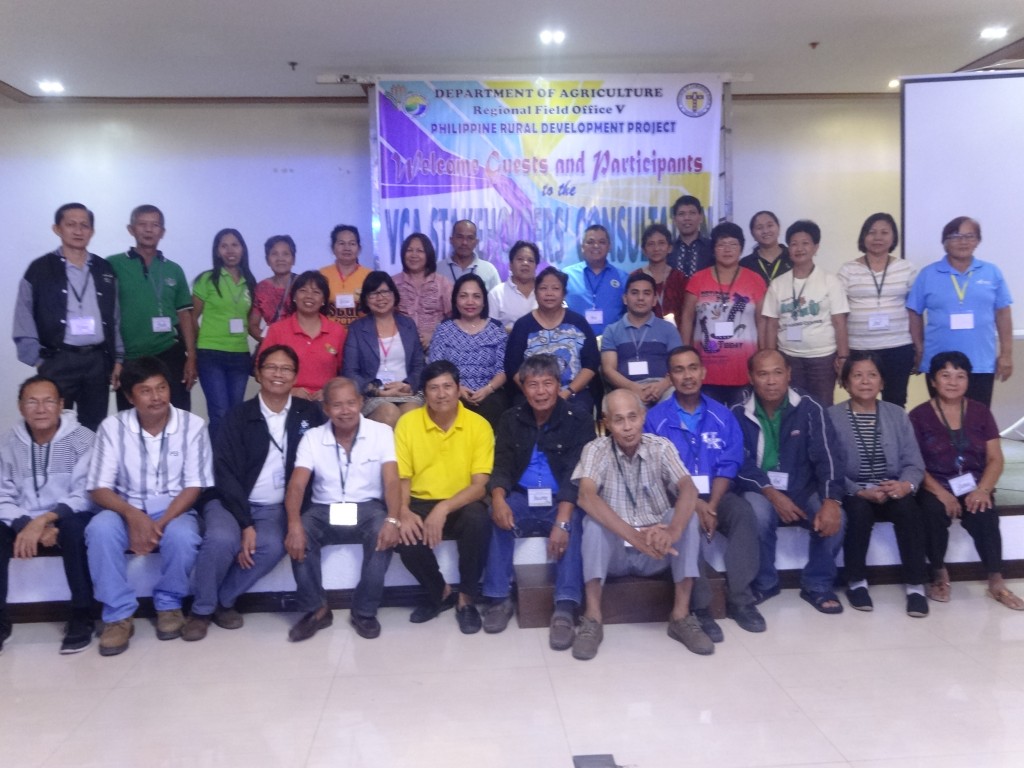
The RPCO V I-PLAN team headed by Aloha Gigi I. Bañaria (4th from left, second row) together with the participants of the VCA for Pineapple Stakeholders’ consultation in Camarines Norte on July 6, 2015.
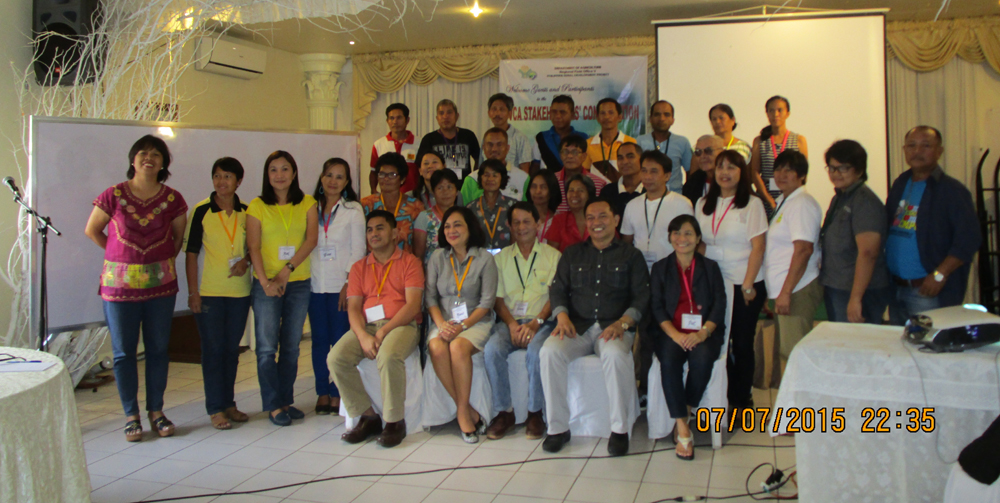
The RPCO V I-PLAN team posed with the participants of the VCA for Cassava Stakeholders’ consultation in Camarines Sur on July 7, 2015.
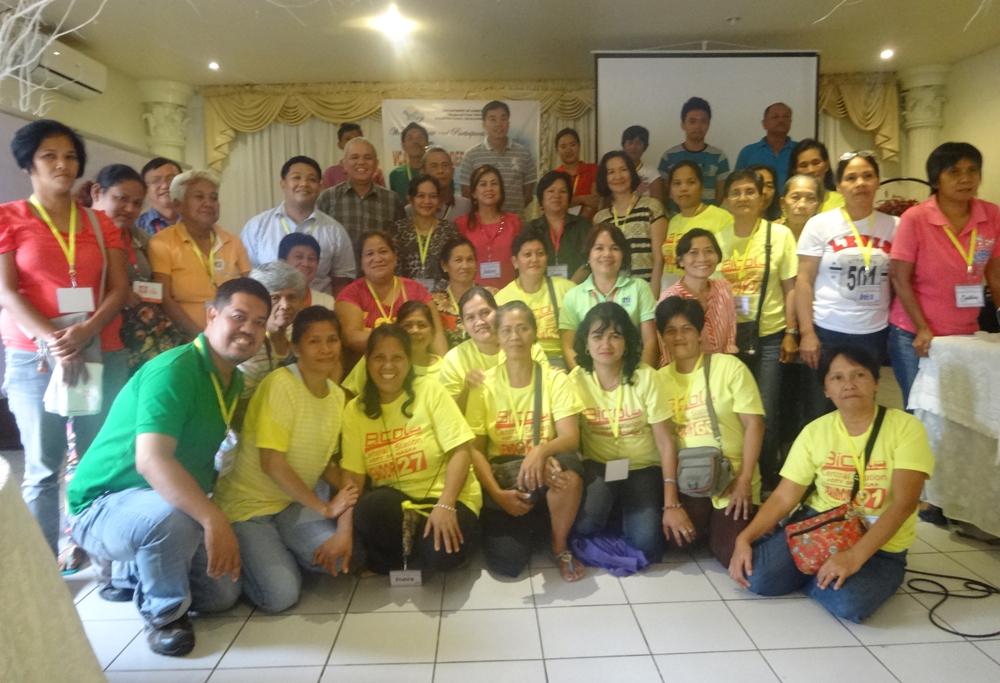
The RPCO V I-PLAN team together with the participants of the VCA for Pili Candies Stakeholders’ consultation in Naga City on July 8, 2015.
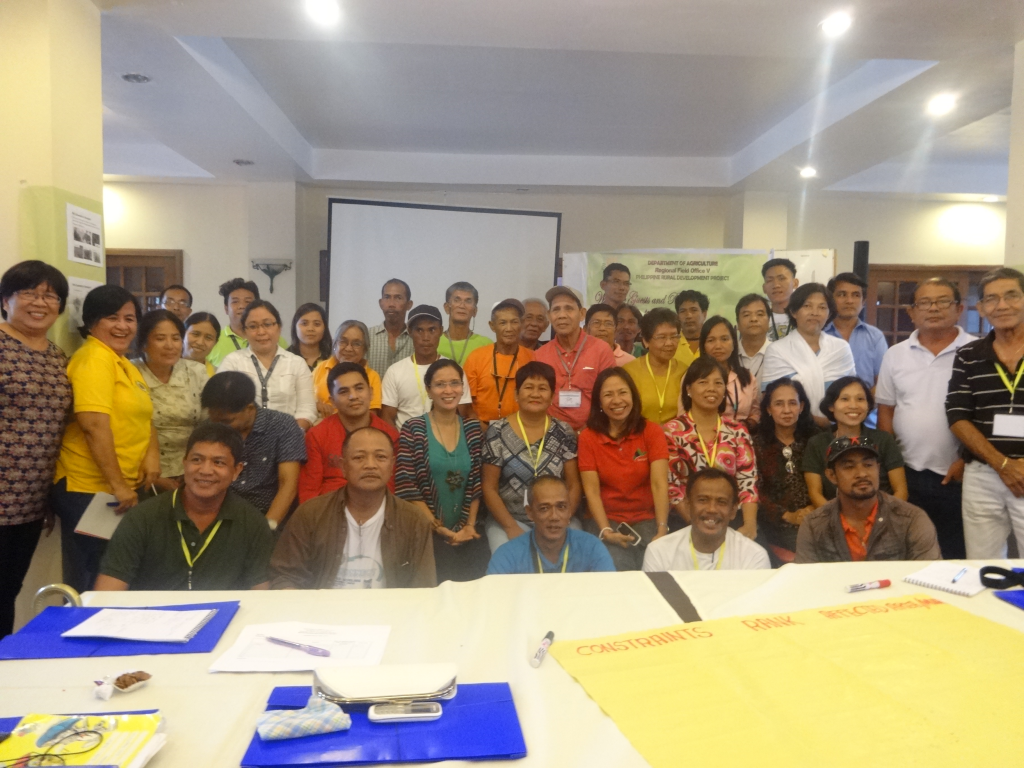
The RPCO V I-PLAN team together with the participants of the VCA for Seaweeds Stakeholders’ consultation in the Province of Sorsogon on July 9, 2015.

